University of Southern Denmark Odense – The Technical Faculty
C.F. Møller Architects designed The Technical Faculty as an impressive and interactive collection of buildings for the University of Southern Denmark in Odense, Denmark.
The Technical Faculty is part of the University of Southern Denmark (SDU) in Odense, and constitutes a shared research and education environment for four different institutes. The building is designed as one big envelope consisting of 5 buildings connected by bridges at multiple levels crossing the heart of the complex, a “piece of furniture” containing common functions, meeting-rooms and café/lounge areas. The many connections allow for more fluid boundaries, and more community and knowledge sharing.
The unusual appearance is a result of both adaption and distinctiveness in relation to the existing campus, which is a unique 1970s structuralist design by architects Krohn & Hartvig Rasmussen characterized by its linear layout and brutalist use of fair-faced concrete and weathered cor-ten steel cladding. The new Technical Faculty building adopts the same materiality and site layout, but reinterprets their use and appearance to clearly set the building apart from the historic campus architecture.
The building is designed as a glass house with an external screen or veil revealing and shading the glazing. The elegant and seemingly weightless screen is made from pre-fab panels of white CRC concrete (Compact Reinforced Composite, a special type of Fibre Reinforced High Performance Concrete with high strength) featuring circular openings with an underlying solar screen and natural ventilation.
The eye-catching screen reflects the innovation and creativity that characterises the various institutes which it unites, including institutes for diverse research on the subject of construction technology and industrialization. Here, the fiber-reinforced concrete architecturally demonstrates the possibilities of new materials.
The Technical Faculty at SDU meets the requirements for low energy class 2015 according to the strict Danish building codes. This means minimal energy consumption, good indoor climate and use of materials with a low environmental impact in a life cycle perspective.
The composition of the façade screen is created from only seven different types of concrete panels, and the different diameters and layouts of the panels’ perforation patterns have been optimized to act as a solar screen and glare protection, reducing direct sunlight by up to 50 percent, while still allowing unobstructed views from all interior spaces to the green surroundings.
The four institutes sharing the building are conducting world-class research in various fields such as material and construction science, nano-optics, environmental sciences and robotics. As a result, the building houses several spectacular pieces of equipment such a one of Denmark’s largest distillation plants, vibration-free and climate-controlled laser optics labs and a special ultra-high strength concrete slab for testing structural loads.
The interior layout creates great flexibility, with the larger labs located on the ground floor for easy access to the terrain and opportunity for outdoor activities.
Architects: C.F. Møller Architects
Photography: Adam Mørk and Joergen True

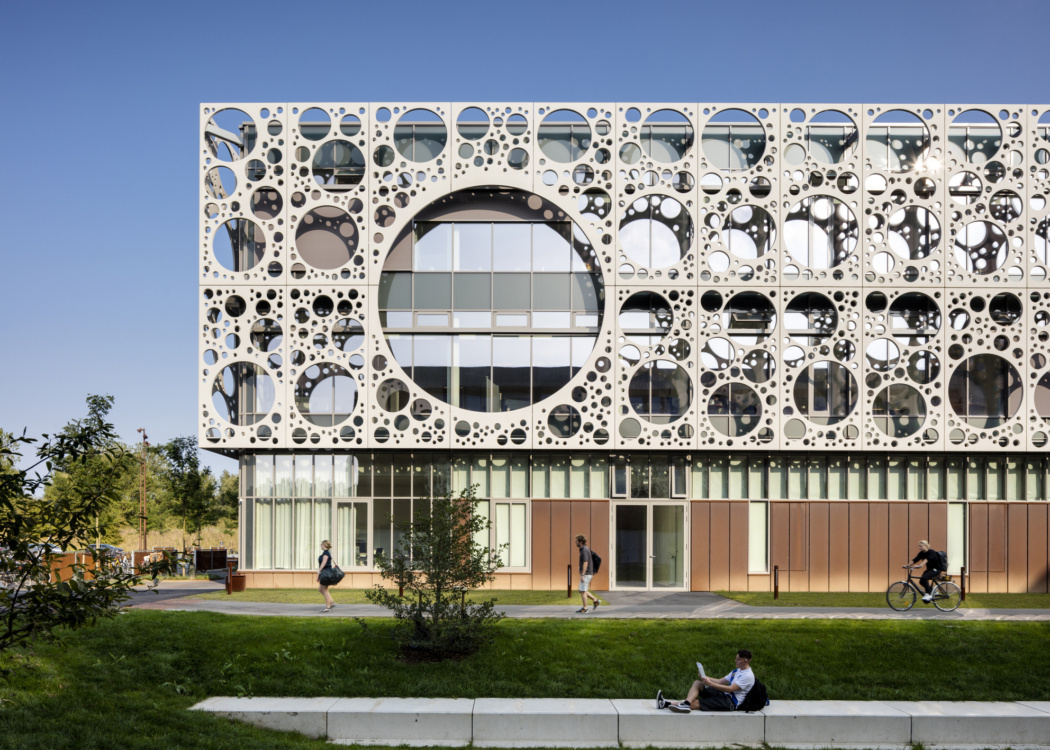
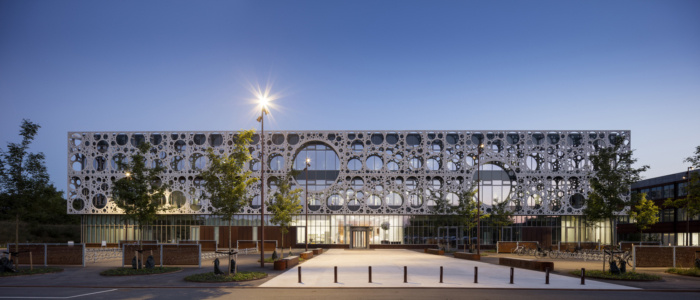
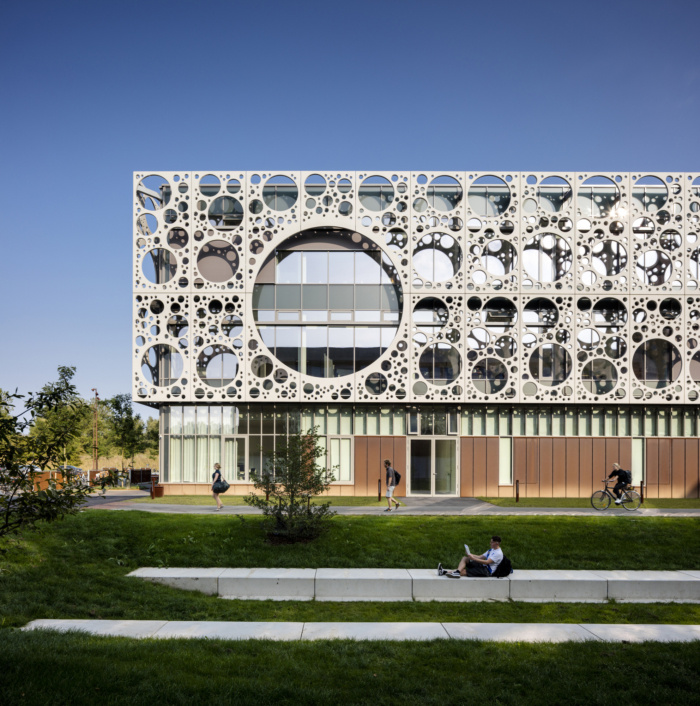
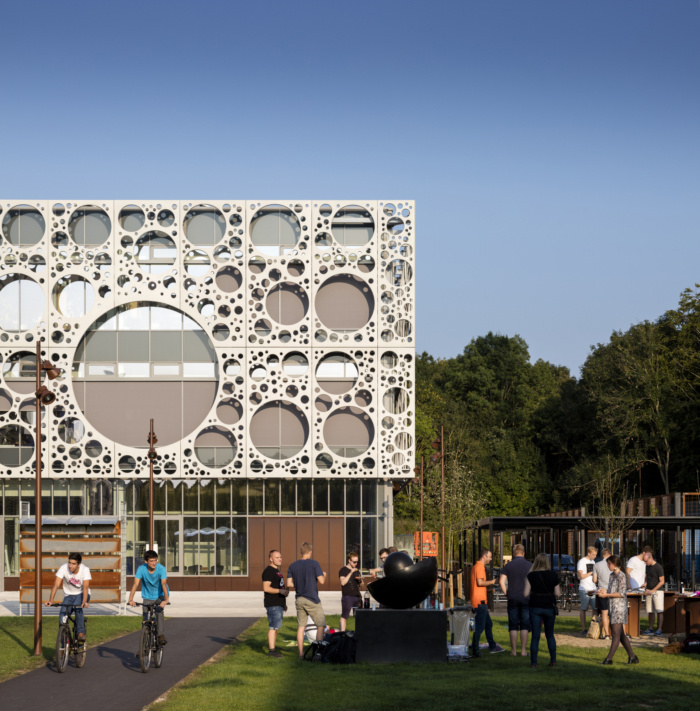
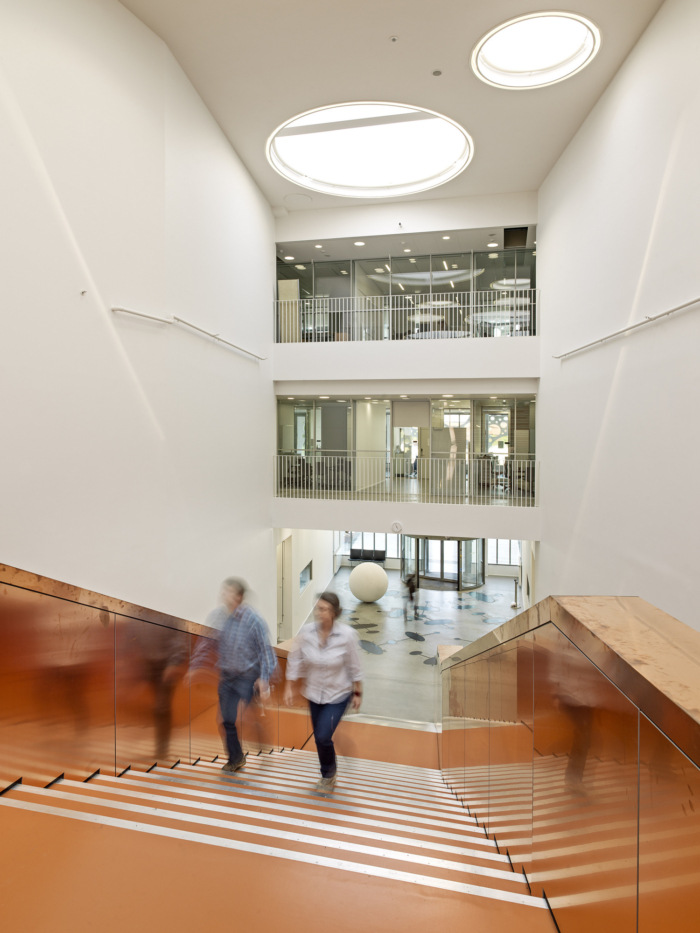
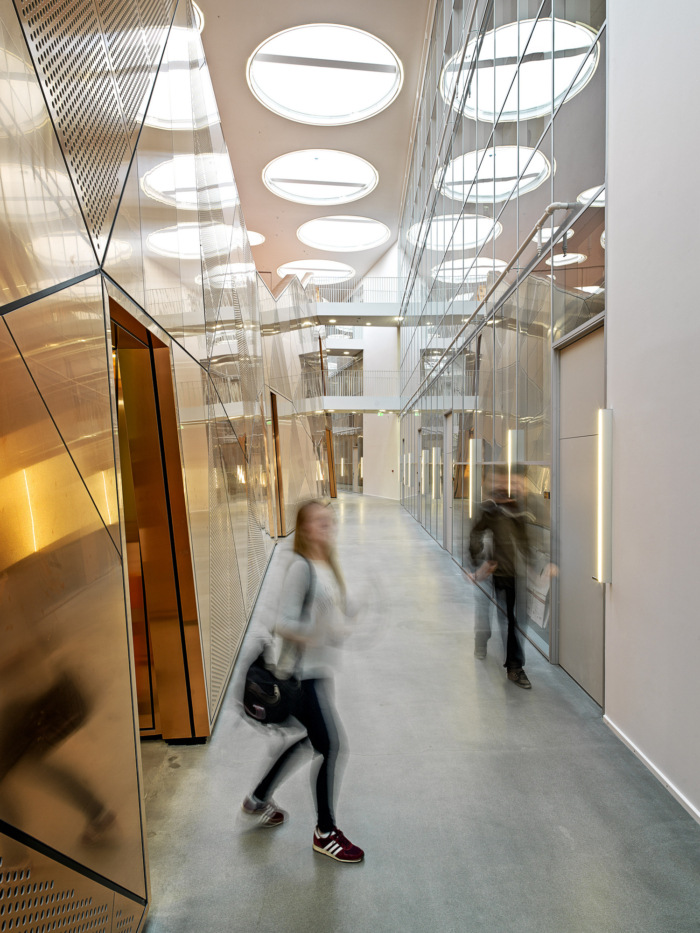
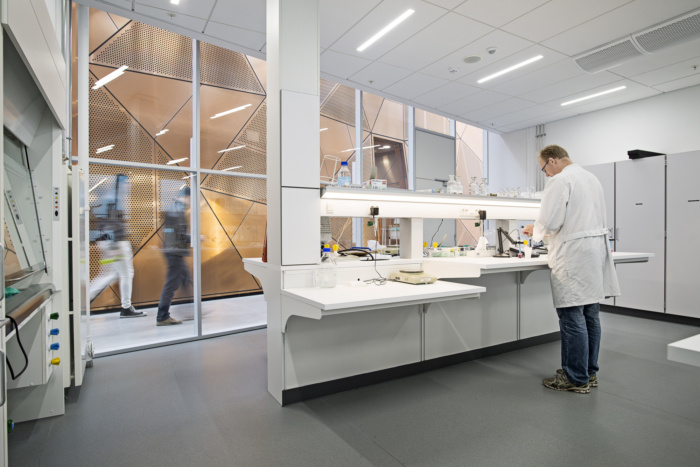
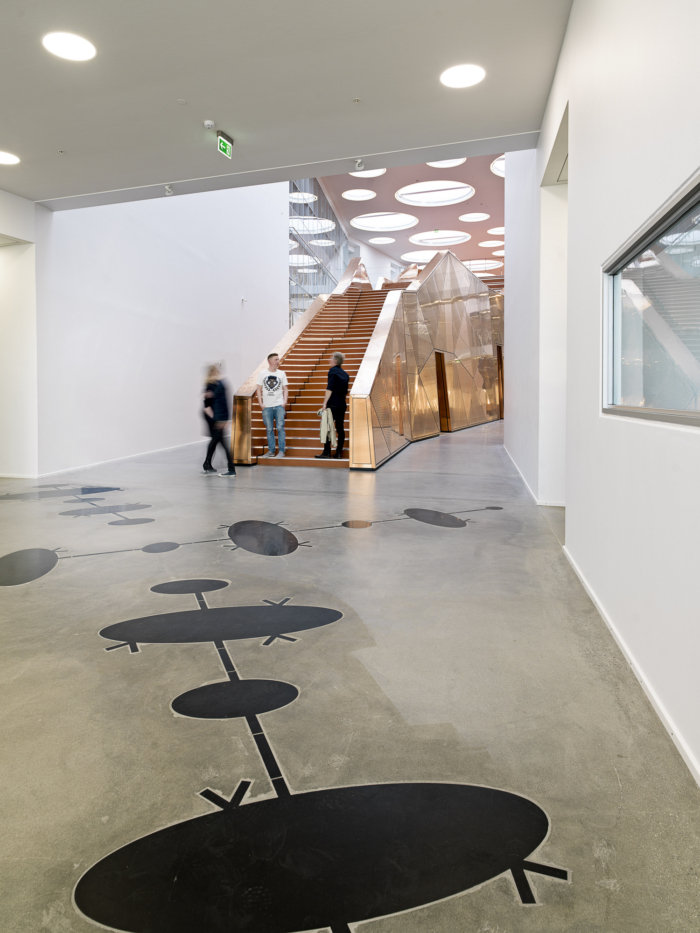
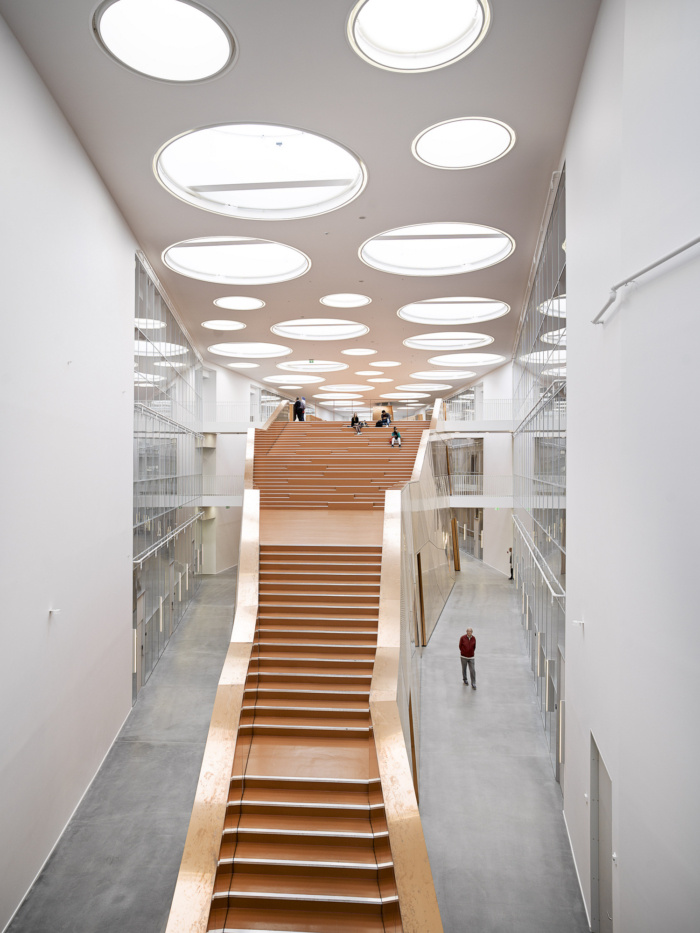
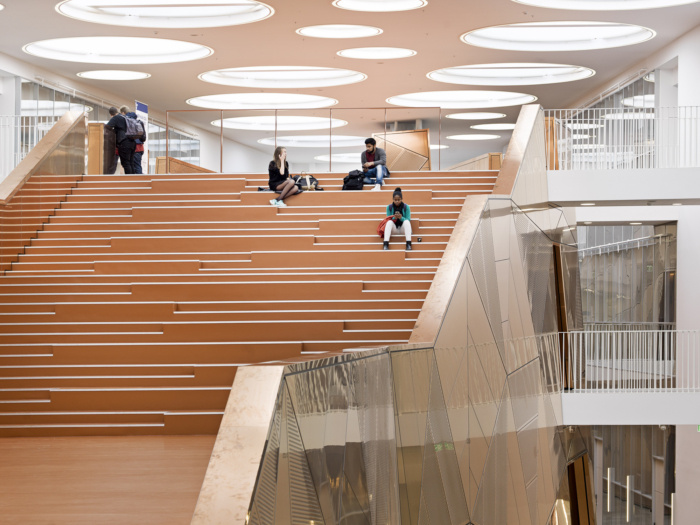
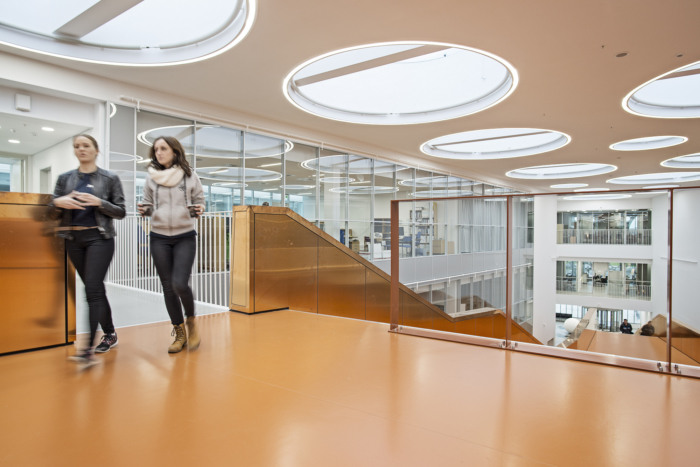
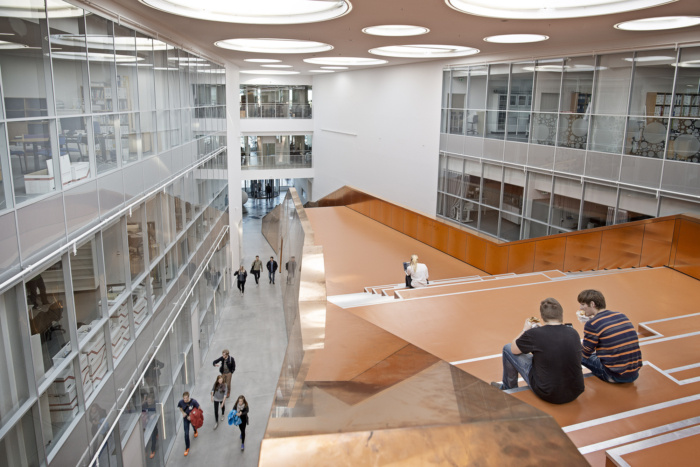
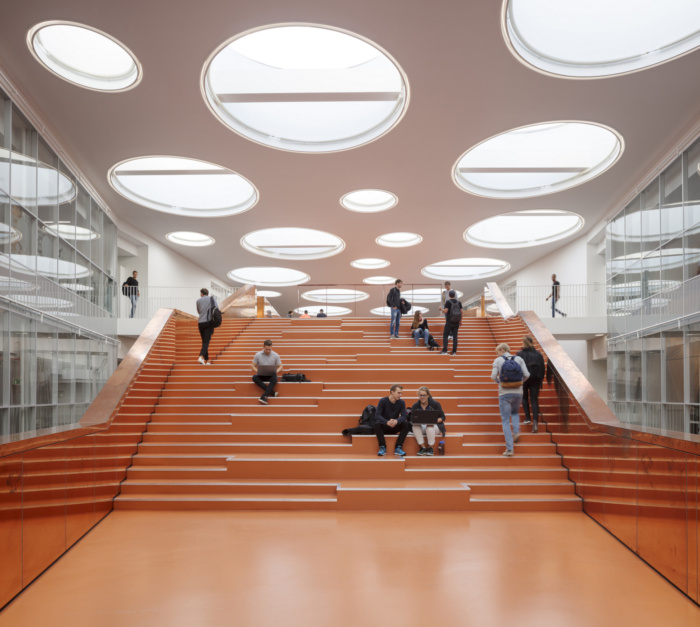

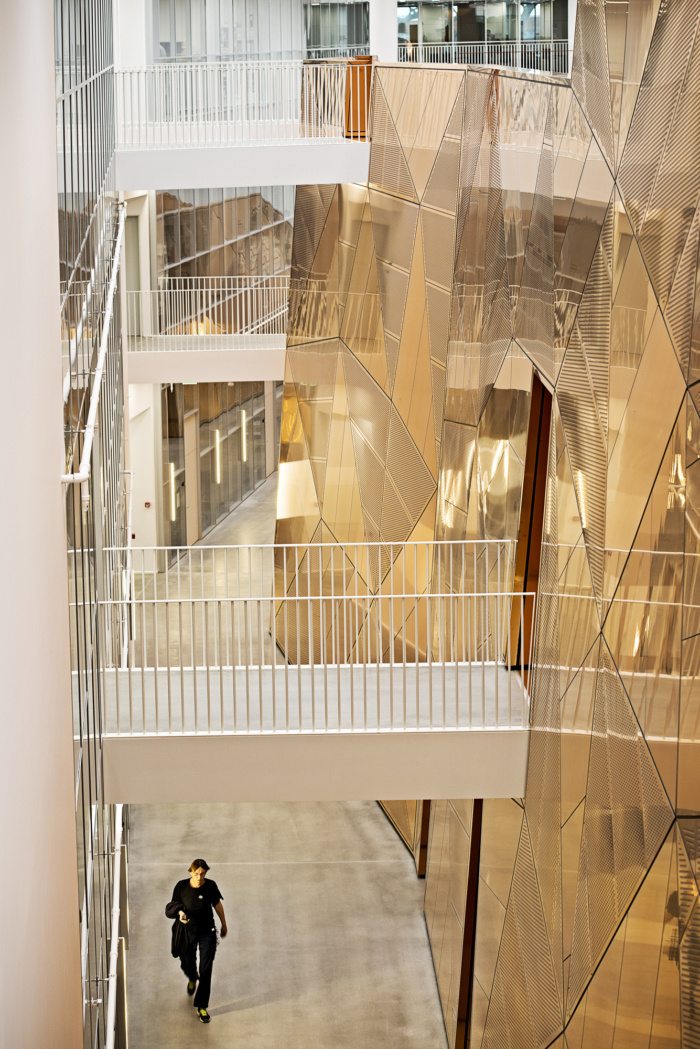
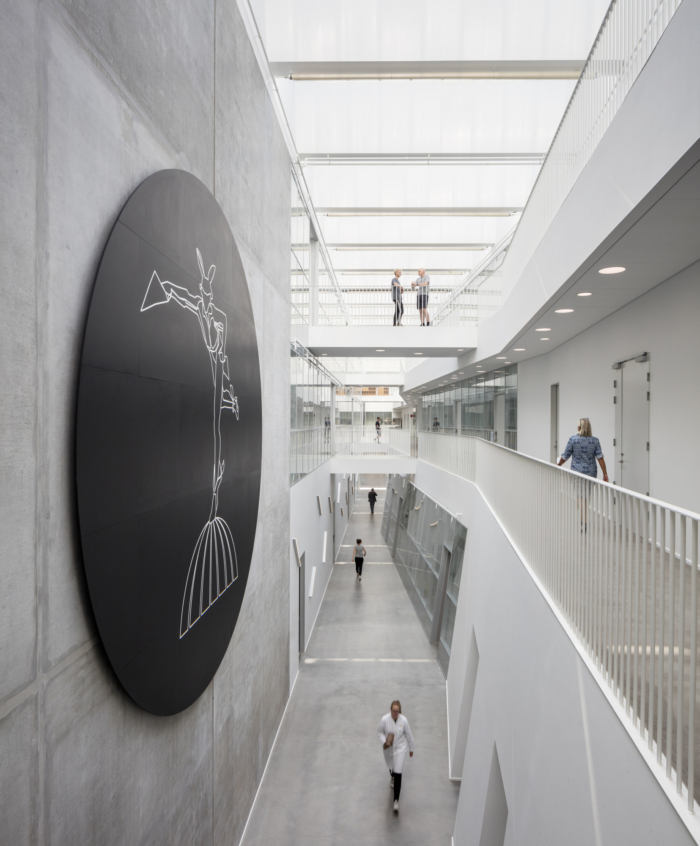

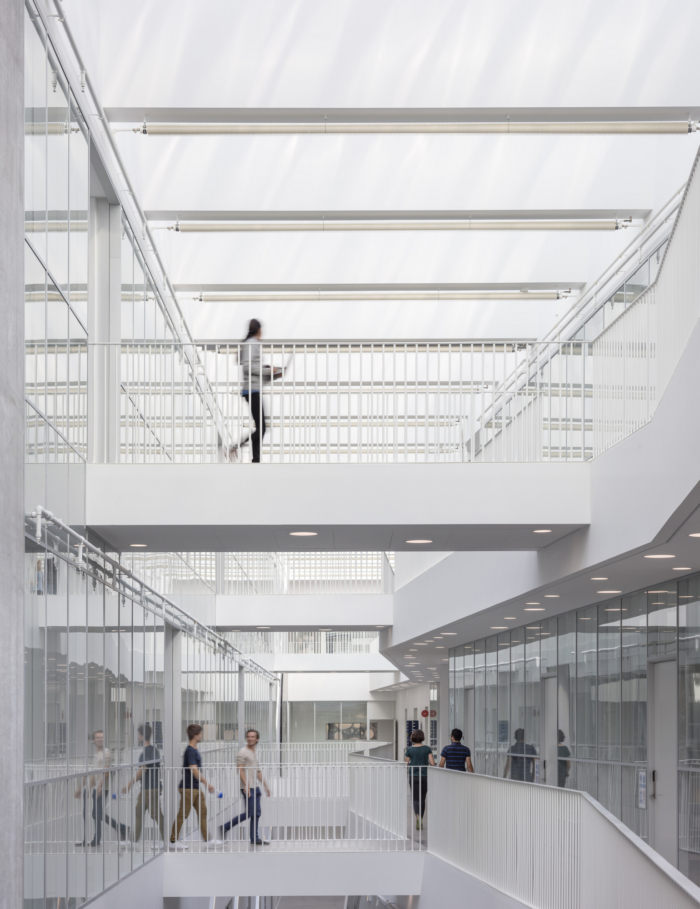
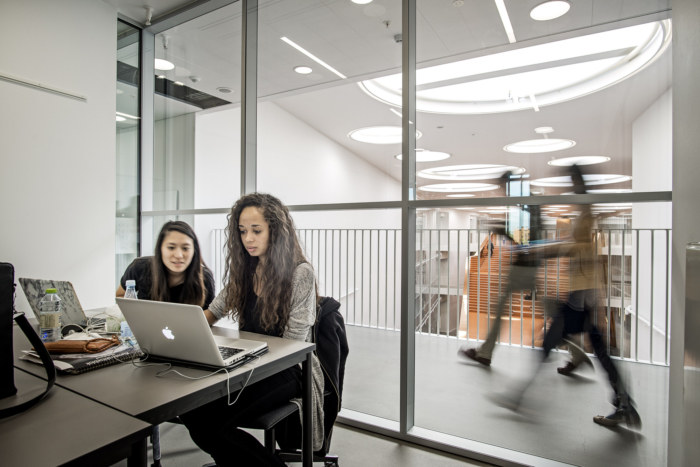
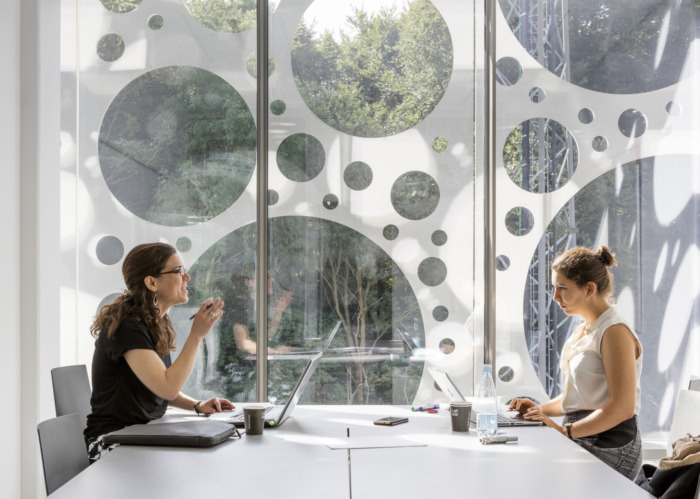
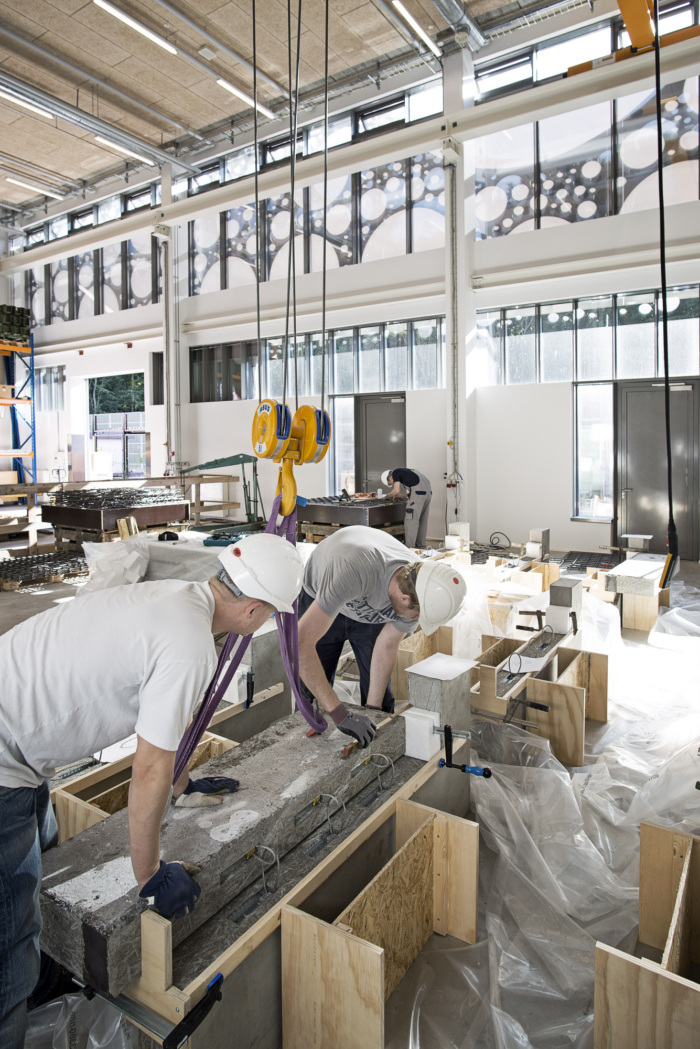
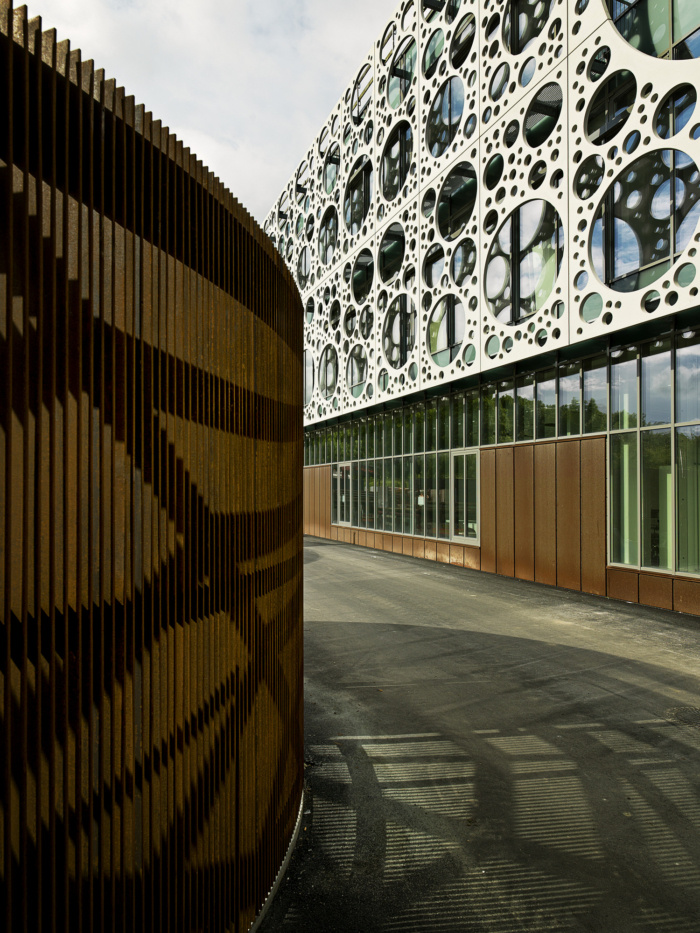
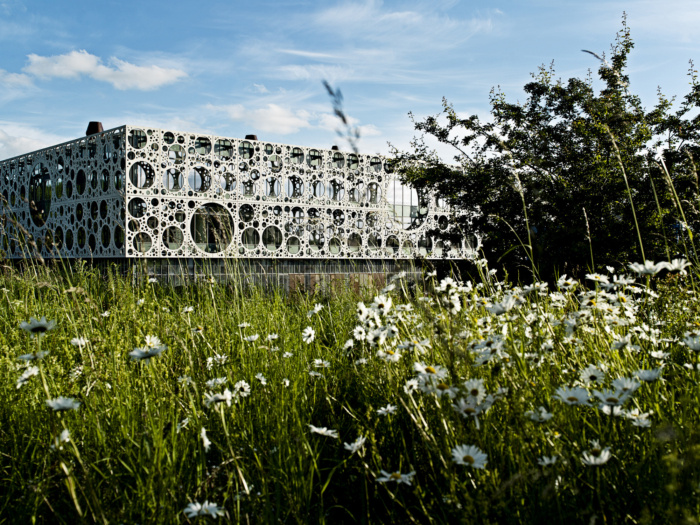
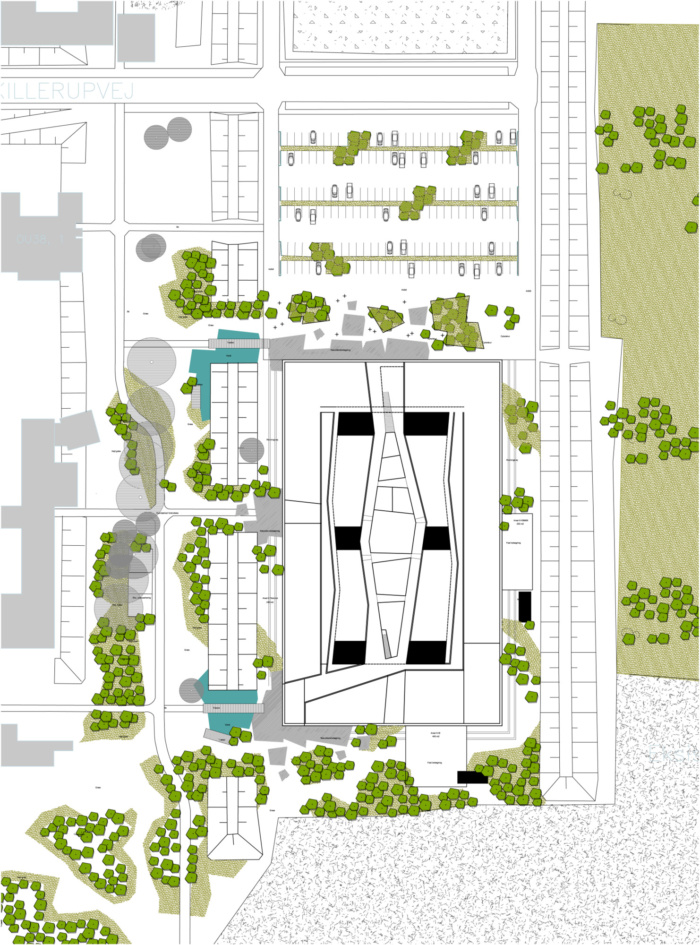



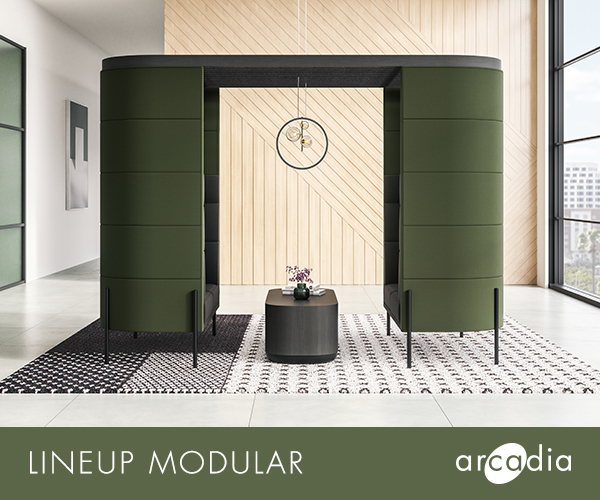
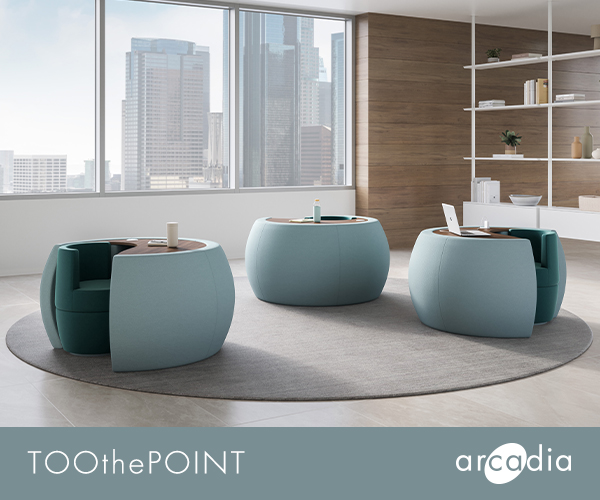




Now editing content for LinkedIn.